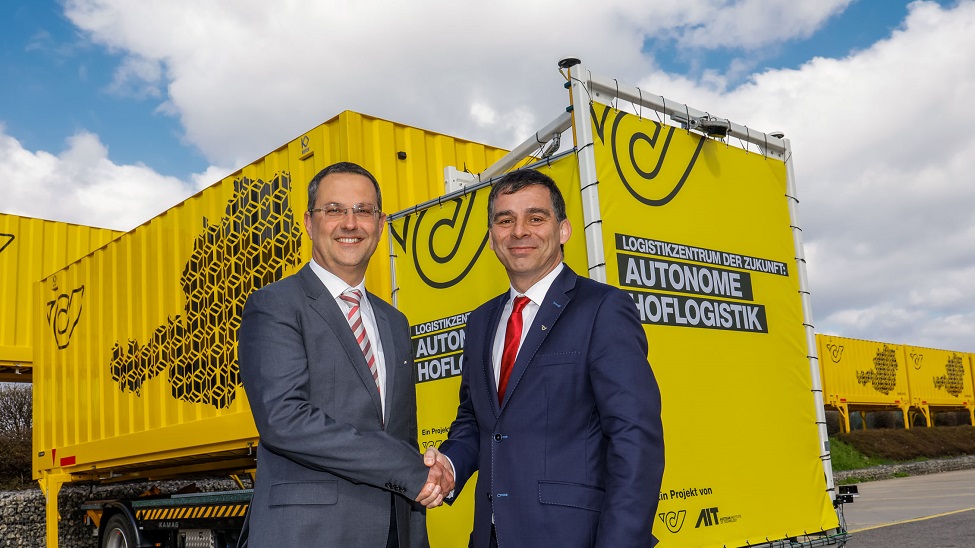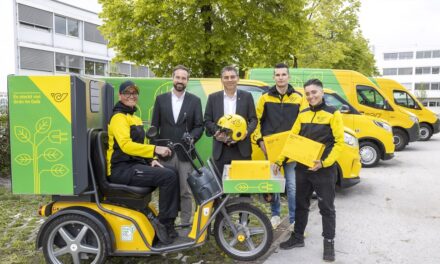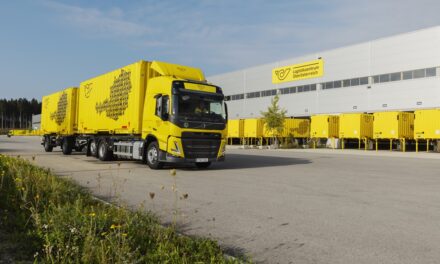
Austrian Post tests autonomous courtyard logistics

Austrian Post has unveiled an innovative vehicle for the autonomous transport of containers – also known as swap bodies – at Austrian Post’s logistics centre in Inzersdorf, Vienna.
The transfer vehicle has been developed by Austrian Post and the AIT (Austrian Institute of Technology) for use at logistics locations, and is intended to ensure the autonomous transport of swap bodies on the company premises.
The swap bodies are therefore transported independently from the designated parking spaces to the gates and docking to them is also automated.
DI Peter Umundum, Member of the Management Board of Austrian Post, said:
“We believe in the future of autonomous driving, although it is difficult at the moment to identify test areas. With our project we have found the first real test area in in-house logistics that offers great potential for future feasibility.”
Peter underlines the importance of this topic for Austrian Post and draws a positive balance after the first results: “At our locations, a total of around 3,300 swap bodies are implemented every day, covering around 800 kilometres. Against the background of increasing parcel volumes and the associated personnel requirements, the relocation of swap bodies in logistics centres continues to gain in importance. We are looking for solutions to deal with these developments – driving forward innovations is one answer. The first tests have already shown what autonomous yard logistics can look like in the logistics centres of the future”.
New, modern technologies, which Austrian Post is developing with its in-house experts and partners, are intended to make day-to-day logistics not only more economical, but also more sustainable. “The AIT has great expertise in the field of automated driving. For example, we are researching the effective and sustainable integration of automated vehicles in logistics applications. By means of a holistic approach, we support our partners in increasing effectiveness, efficiency and sustainability,” said DI Arno Klamminger, Head of Center for Mobility Systems at AIT, about the promising project.
In the future, the transfer vehicle will be electrically powered with the aim to significantly reduce pollutant and noise emissions. At the same time, automation is driving forward digitisation: From the order via “note and radiotelephony” to the plannable, digitised process. For the pilot project, a standard swap body pallet truck was converted.
The findings from the tests in Inzersdorf, the largest logistics centre of Austrian Post, will be incorporated into further development work.










